Engagement Ring - In Progress
Setting
Stone
Limited Time: Purchase any Engagement Ring and receive a $250 Gift Card for your Wedding Band.
We guarantee that every single purchase directly impacts one person's life by giving them access to clean water.
Looking for a diamond and want to know the ins and outs of diamond grading so you understand what your jeweler is telling you (and what they’re not)? I can appreciate that. My name is Corinne, and I’m Do Amore’s gemologist. In this article, I’m going to teach you everything I’ve learned about diamond grading from GIA (Gemological Institute of America). That way, you’ll know exactly what to look for and how to get the biggest bang for your buck.
The “4Cs” of diamond grading are the different factors diamond experts use to evaluate the quality of a diamond. The factors are: cut, color, clarity, and carat weight. A diamond’s “cut” grade is how well the stone’s angles align to create sparkle. “Color” is how white, or how slightly yellow, a diamond is. “Clarity” is how “crystal clear,” or how visibly flawed, a diamond is. Finally, “carat weight” is how heavy the diamond is.
Without question, cut is the most important C. You’re getting a diamond is for its sparkle, right? So, because the quality of your diamond’s cut directly controls the amount sparkle it has, that’s – by far – the most important factor. In order of importance, cut is followed by carat weight, color, and finally, clarity. This is because you want the largest, most brilliant gem you can get for your dollar. Let’s talk through these in order.

Diamonds sparkle because, when ideally cut, they reflect and multiply light, like a prism. However, if a diamond’s facets (the little cuts all over the stone) are not perfectly aligned, light rays can reflect sideways or downward, instead of back at its viewer. That loss of light means you are losing valuable, beautiful sparkle, and creating dead spots in your stone.
If you mean shape, definitely Round – they were engineered to produce the most light. However, if you mean the best cut grade, it is GIA “Excellent.” A cut grade of “Excellent” means that, in the opinion of independent gem lab GIA, the diamond gives top sparkle. Additional cut grades include Very Good, Good, Fair, and Poor. Annoyingly, GIA only grades the cut of Round diamonds. That’s ok. I’m going to teach you how to grade them all.
An “ideal” cut diamond is a diamond that, in the jeweler’s opinion, has perfect angles and reflects the maximum amount of sparkle. However, it is super important to note that there is no industry standard for what an “ideal diamond” is. In fact, a quick Google search will show you that “ideal” means something different to everyone. That said, there are definitely proportions and features to look for that all ideal diamonds have – and which most jewelers would agree upon.
To assess the cut grade of your stone, diamond experts use the following three steps:
The “ideal proportions” of a diamond are the measurements and angles it needs in order to have maximum sparkle. The proportions you need to look for depend upon diamond shape. However, they do always include table size (the size of the top facet of your stone) and depth percentage (how deep your stone is). For example, in a Round diamond, ideal table size is between 55-60% and depth percentage is between 58-62%. These measurements matter because they directly relate to how light will enter and reflect around your diamond.
Each diamond shape also has specific cut features to look for in order to find an ideal stone. For example, Round diamonds require specific crown angles and pavilion angles. Emerald cuts require evenly-spaced steps. Princess cuts need even contrast. Each shape has several. So, right click and open our resource section in another tab, click on your specific shape, and then continue on!

Ok, so you’ve checked the proportions needed on the resource page, right? And you’ve filtered out diamonds with lousy proportions – good job! Now, let’s look at some stones! There are positive and negative things to look for. I find it’s easiest to look for the bad stuff first – weed those suckers out fast! Then, you can look for the tiny differences which set apart Ideal diamonds from among the great candidates. The following are those little differences that make such a big impact on your Ideal diamond.
Look at the shape of the diamond. In your mind, run a line down the center of the stone. Does the left match the right? Is the outside shape symmetrical and pretty? Or is it kinda wonky? Well cut stones will be symmetrical, pleasing to the eye, and without odd angles.
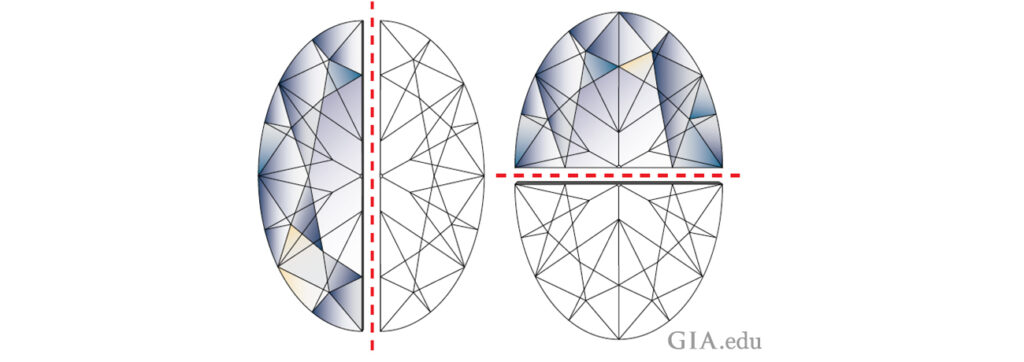
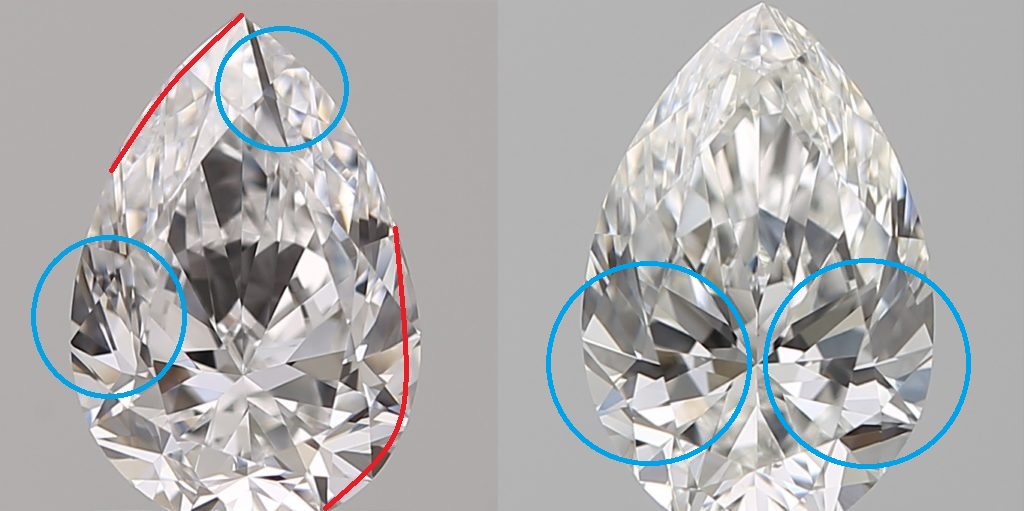
BLUE = contrast (shadow); RED = extra weight (shape irregularity).
The Pear on the left is squarer and heavier on its bottom right than on the left, and has extra weight on the top left as well. This shape asymmetry is marked in red. So, think about this Pear from a distance – it’s supposed to be elegant and graceful, right? Does something lopsided do that for you? Not so much.
Also, the left Pear has significant “contrast” (dark area) asymmetry, in comparison to the right Pear’s symmetrical, pretty contrast. Contrast is circled in blue. Compare the asymmetrical, confusing dark areas in the left Pear, to the symmetrical, pleasing darker areas in the Pear on the right. Now image how they’ll sparkle! Symmetrical contrast and sparkle is very important in overall diamond beauty – from near and afar!
Another thing to look for while your stone is still is even light return. So, look at the center of the stone. Is the center darker than the rest of the stone (a “nailhead”)? Or does it have a weird white ring in the center (a “fisheye”)? Well cut stones will not have either of these issues.
Pro Tip: Nailheads and fisheyes can happen in any shape! Note the fish-eyed Cushion and the nailhead in the Round below.

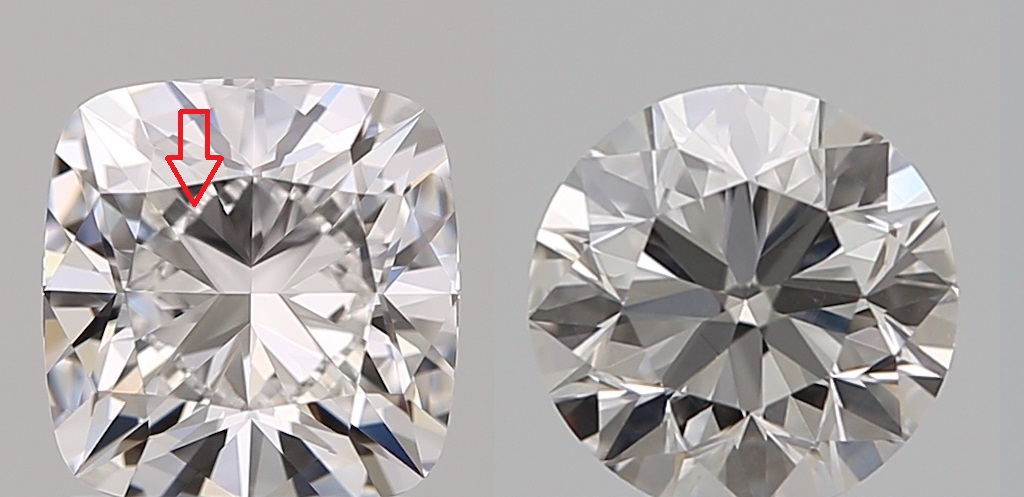
Left: Cushion with fisheye; Right: Round with nailhead
The “culet” of your stone is the point on the very bottom of the gem (as seen when you look at it sideways). It is supposed to be centered, because that’s the way a diamond gives the most sparkle, and also because it’s visible through that huge table (top) facet and it would be distracting otherwise. That second point gives us a clue about how ideal it is, though, right? So, to see if your culet is centered, look at it through the top facet of your stone, straight on. And, use that imaginary line you drew down the center before. Is the culet along that line? Or, is it slightly off-center? Well cut stones have perfectly centered culets. The heart below breaks my heart….so off center and distracting.
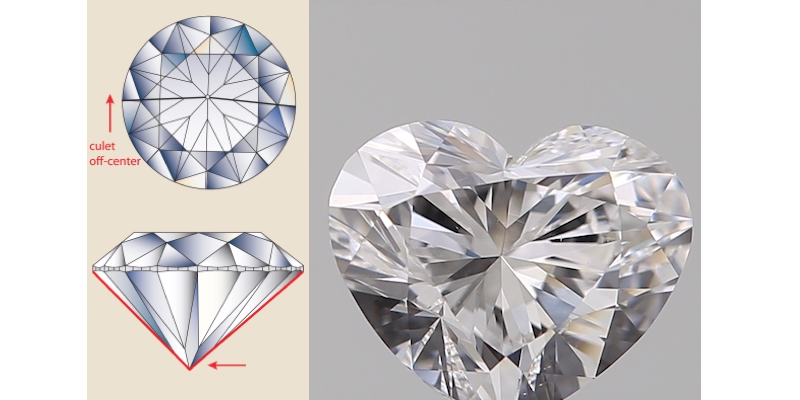
Heart with off-center culet
“Contrast” is a tool to gauge how lively your diamond is. It means how well the dark areas of your stone interact with the bright areas of your stone. So, in other words, you actually want some dark areas in your diamond!
Whaaaaat? No, I’m not kidding. Check out the stones below. The top set of stones have no meaningful contrast pattern. In other words, sure, they’ll look “white,” but there isn’t any darkness to produce sparkle from. Now, look at the lower stones. See the structure the contrast gives? All the bright sparkle coming from these stones is going to look like fireworks!
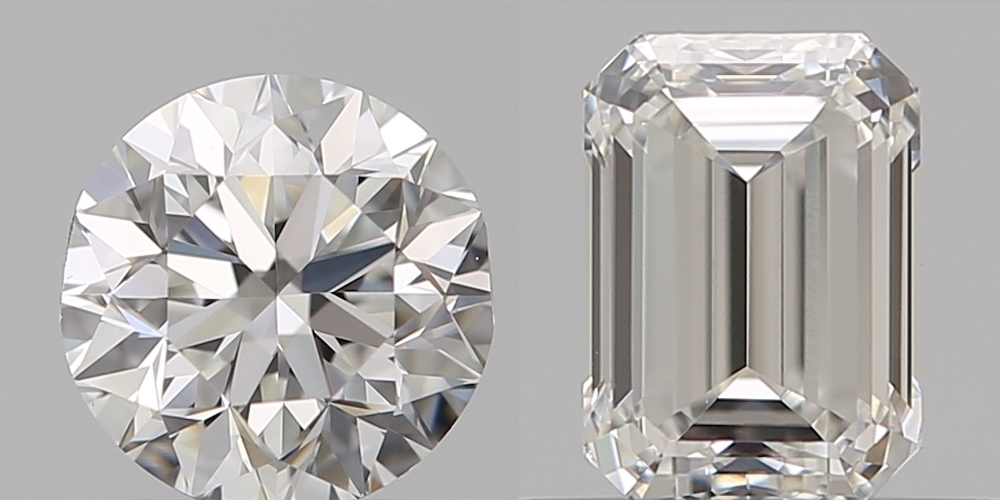
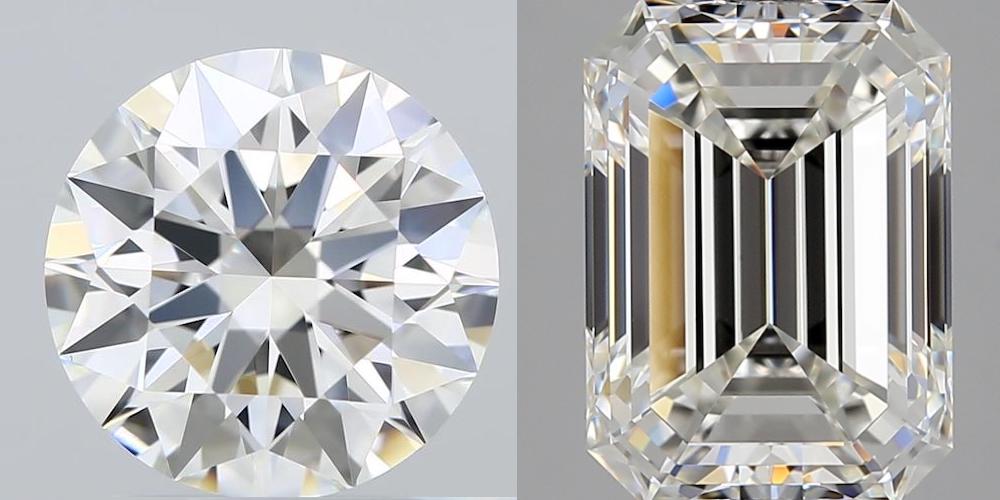
“Dead” stones, without contrast.
Great – so the stone you’re looking at has some play of dark and light, right? That’s what you want! Now. Let’s make sure it doesn’t go overboard. Is your contrast even and beautiful? Or, does it have weird patterns (“black boxes”), or distracting patches of darkness (“bowties”)? Look at the stones below. You don’t want contrast like this, which distracts from beauty.

Left: Black Box; Right: Bowtie & Weird Patterns
You did it! You’ve learned how to pick out an ideal cut diamond like a jeweler! Your well-cut diamond will have great proportions, even sparkle, and great, lively contrast.
It may be controversial to identify carat weight as the second most important of the 4Cs, however, most people agree with me behind closed doors. This is because size is the most noticeable factor, after sparkle power.
Contrary to popular belief, carat is a weight not a measurement. One “carat” weighs 0.2 grams. And there are 100 “points” in each carat, just like pennies in a dollar. So, a 1.29ct diamond is pronounced “one point twenty-nine carats.”
The important takeaway from this is that you cannot trust a carat weight to get the “size” you want. That is because a 6.3mm, 6.5mm, or 6.7mm round diamond could all weigh 1.00ct – it just depends on their proportions (remember those proportions from above?!). This is even more important with fancy cut diamonds which can vary drastically in shape and size.
Jewelers use “gem scales” to weigh diamonds. They use “calipers” or “millimeter gauges” to measure their lengths and widths. Simply place the stone on the scale, or measure the diamond with the calipers.
Some people find it helpful to know that most of our couples choose diamonds that fall within the 1.0ct-2.0ct range. However, I think there’s a better way to choose your diamond’s carat weight. It’s called “finger coverage.”
Your goal is to choose a diamond ring that looks classy, impressive, and proportionate, right? In order to accomplish that, you need to consider the finger it’s going to sit on. The average finger width is 17mm. So, to choose a good carat weight, look at the diamond’s width and length, and choose a size which will provide good “finger coverage.”

Those with longer fingers may prefer a longer diamond, such as an Oval, Radiant, or Rectangular Cushion. These diamond shapes look larger than Round or Princess cuts of the same carat weight. Those with plumper fingers may prefer a squarer shape, or may wish to set a long diamond horizontally.
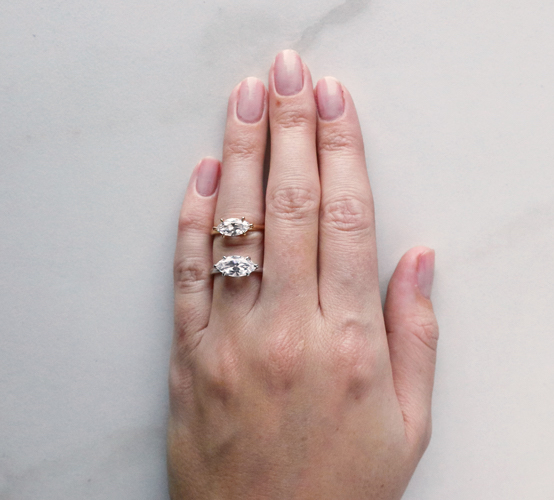
In addition – remember to consider your ring setting. A nice setting is an easy way to get great finger coverage.

Want to know even more about diamond carat weight? Check out my article on how “light” carat weights can help you save up to 65% on your diamond with no visible difference!
Diamond color is the third most important of the 4Cs because it is more noticeable from a further distance than the last C, clarity.
The “color” of a diamond is its pure whiteness, or its degree of yellow tint. The diamond grading scale for color begins at D and ends at Z. Diamonds with color grades D-F are “colorless” – like Brita water compared with tap water. G through J colors are “near-colorless.” G and H have just the slightest tint of yellow (which is basically undetectable in well-cut stones “face-up”), whereas I and J have some warmth even facing up. Diamonds warmer than J color will show obvious yellow while face up.
Ok, so color is the only diamond quality that is graded “face down.” What I mean by that is – go ahead and flip that baby over! Diamond grading for color takes place this way so that the sparkle doesn’t distract you. In addition to upside-down grading, jewelers also use white backgrounds and comparison diamonds to see if the unknown stone is whiter or more yellow. In other words, even we can’t really tell the color of a diamond by sight alone.
However, what a diamond looks like face-up is probably more important to you, though, right? So, to tell if a diamond is “white” enough for your preferences, look at it face up, and consider your ring setting (yellow rings will mask some yellow diamond tint). Compare your chosen diamond to the ring’s metal and any other diamonds in your setting (they’re typically G-H in color), and make sure your chosen diamond looks “white”!
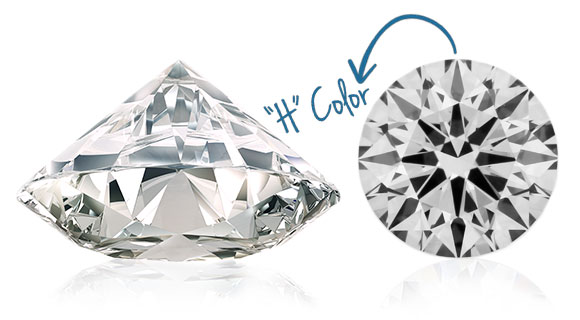
The “whitest” diamond is a D color. However, the best value in a “white” diamond is found in a G or H color. This is because G and H colored diamonds typically show no noticeable color face up, and are priced much lower than top D-E-F colored diamonds.
Want to know even more about diamond color? Check out my even more in-depth article here.
The clarity of a diamond is how “crystal clear” it is, or how noticeable any internal markings within it (“inclusions”) are. Diamonds are made of crystallized carbon. So, any tiny crystals that got stuck in the carbon during formation are now part of the diamond! These little “inclusions” are the fingerprint of your diamond – no two are alike. Almost all diamonds have inclusions. Those that do not are called “Flawless.” Flawless diamonds are incredibly rare and incredibly expensive. Next, come VVS1 and VVS2, then VS1 and VS2 – these diamonds have small inclusions which can only be seen under a microscope. SI1 and SI2 have somewhat larger inclusions, which can sometimes be seen with the naked eye, but should not be too distracting. Diamonds in the I1, I2, and I3 categories have noticeable, visible inclusions.
Clarity is the only factor that uses magnification. So typically, you’d need either a jeweler’s loupe or a microscope for this step. However, diamonds online are magnified already, so we can (kinda) skip that step. Here’s how to grade like a jeweler:
Gemologists grade diamonds for clarity based upon the noticeability of inclusions. So, take in the whole diamond from afar (or, if online, pretend it is far away) without being too picky. Does it have super noticeable, black inclusions? Or, does it look pretty clean? Check out the stone below. You’ll notice that its inclusions are not noticeable when closer to its real size (even though it’s still magnified quite a bit).
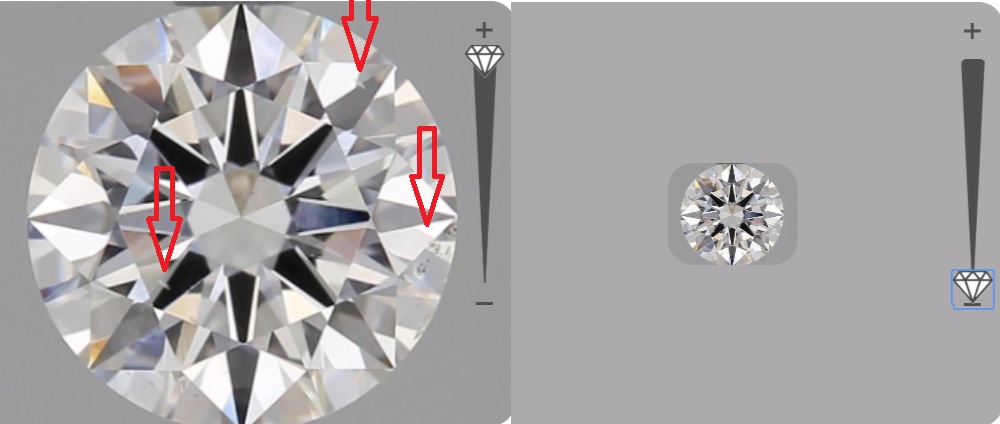
Left: Visible inclusions in magnified SI1 diamond; Right: Same stone is eye clean without major magnification
So, back to your stone. If you see noticeable inclusions, assume it’s an SI grade or lower. If it’s pretty clean from afar, start off by assuming it is a VS clarity. Then, use your magnification and start looking hard. If you start seeing inclusions, it’s a VS. If it takes a while to find an inclusion, it’s VVS. Still can’t find an inclusion after looking for a while? It’s a FL-IF.
The most “flawless” diamonds are graded….Flawless. However, the best value in diamond clarity is found in VS2 clarity stones. These gems are typically eye clean, but are much less expensive than more flawless gems. In other words, in all “brilliant cut” diamonds (round, princess, oval, cushion, radiant, pear, heart, marquise) there’s no visual difference between a flawless diamond and a VS2 diamond without a magnifier. “Step cut” diamonds (emerald and asscher) typically require a VVS1-VVS2 clarity to maintain “eye clean” appearance.
Want to know even more about diamond clarity? Check out my even more in-depth article on diamond clarity here.
Ask our gemologist (me)! My name is Corinne, and I am happy to answer any question you may have about diamond grading, the difference between color or clarity grades, or how to pick the best cut. That last one can be super tricky. I love working with couples – so ask away!
Verifiably Ethical & Sustainable
Guaranteed 1:1 Impact
Personalized 1:1 Customer Service
handcrafted & american-made
you before us, always
Verifiably Ethical & Sustainable
Guaranteed 1:1 Impact
Personalized 1:1 Customer Service
handcrafted & american-made
you before us, always
Thoughtfully crafted, made to last, and designed for life's most meaningful moments. LEARN MORE
Diamonds, Gemstones, & Metals
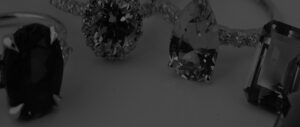
Every piece of Do Amore jewelry begins by not hurting the world. All our natural diamonds are either ethically sourced in Canada, recycled to eliminate additional demand, or accompanied by a blockchain ledger showing every hand your diamond passed through, proving your stone is truly conflict-free.
We also offer sustainable lab-created stones and guarantee all precious metals are recycled to eliminate the environmental impact of mining. Since March 2022, we carry absolutely no Russian diamonds and continue to urge the industry to follow suit.
Clean Water
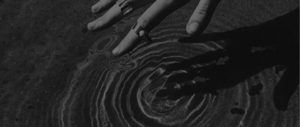
We desire to deepen the well of love in the world. We guarantee that every single purchase—whether engagement ring, wedding band, or piece of jewelry—directly impacts one person’s life by giving them access to clean water.
We do this by directly matching jewelry purchases to people in communities to ensure our funding has a one-to-one impact. We also show you the exact GPS coordinates and a photo of the water well your ring or piece of jewelry helped fund.
Customer Service

As a small, 100% founder- and employee-owned team, one-to-one encounters are at the heart of our values. Whichever way you want support throughout your engagement ring or jewelry purchase process, our team is here to accommodate you.
From high-touch to hands-off, video calls to text messages, you have our dedicated, responsive team on your side from the moment you start your search, to the day your well is built, to the time we meet again.
Engagement Rings, Bands, & Jewelry
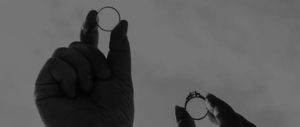
Every Do Amore design, whether one of our own or unique to you, is beautifully handcrafted in America and made specifically for you. Each ring is made to order, every time.
From classic to custom, you have the option to select from dozens of gorgeous settings or work with our design team to create something entirely bespoke. Plus, you are always covered for free inspections, polishing, cleaning, stone tightening, rhodium-plating, and resizing for life.
Our Promise

We care about what matters most to you, not what’s easiest for us. If it’s a minor change to a setting or arriving at a completely custom design, we work to ensure you get precisely what you love.
From statement-making to understated, we have options at any price point. Plus, you always have our team on your side searching to bring you every stone within your specifications. We also offer 60-day returns and a limited lifetime warranty to cover you in the rare event of a manufacturing defect.